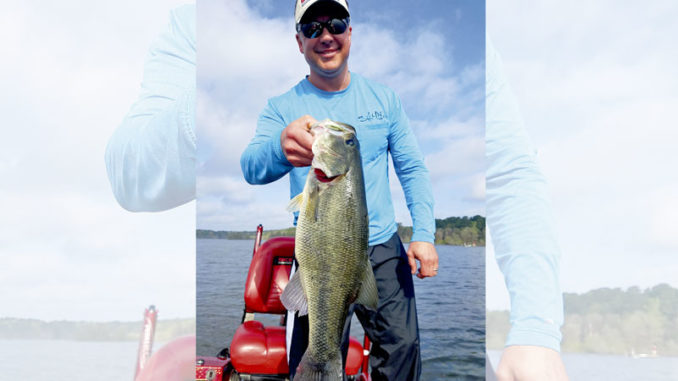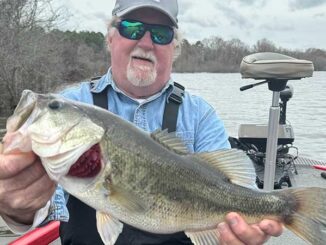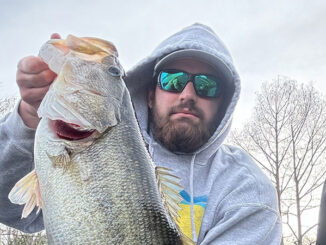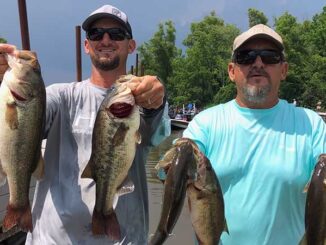
I wore a smile non-stop while on the water one weekend several weeks ago on Toledo Bend.
The bass I was catching on a Carolina-rigged soft plastic off ridges that would have been out of the water in December — or close to it — were a positive sign that things were getting right. I’m pretty sure you’ll be smiling this month, with the traditional red-hot patterns paying off.
Why?
After so many months, the pool level started rising late this winter and at the end of February, it was at 171.24, about 7 inches from full pool.
That means outside ridges like I was fishing on the lake’s lower end had enough water on top of them to hold bass, and that should make bass anglers salivate at least into the month of May. That bass were up there in the prespawn and spawn period was so encouraging.
Their presence means the lake’s bass were very, very close to a full-blown spawn on the full moon on March 7. April, for sure, will be a banner month. It’s just going to be stupid good! It’ll be a time for soaking soft plastics like Super Flukes and Senkos on and near beds as well as for spinnerbaits, namely the 3/8-ounce golden bream Stanley 305DW and golden bream Stanley 258DW, and bladed jigs, namely the Delta Lures Thunder Jig, for any bass in transition or living in the bushes, particularly up north.
You can’t get much better than that. Fish are in the most-vulnerable and most-aggressive stage of the year. The majority will be in depths of 5 to 10 feet, up and down the lake, west to east, with some regions firing earlier than others.
The flip side
What we don’t want this spring is for the lake level to go higher than 172.0. That’s when the water gets beyond the hard bank line and bass get so far back you can’t get to them.
About those ridges. Mostly, vegetation has grown on bare spots that I’m fishing down south, as well as other ridges across Toledo Bend. You can’t see the grass now — you’ve just got to understand the lay of the land. That’s what the “inside grass line” is now. Haygrass and other underwater vegetation will fill up when there is more water in the lake.
I’ll work those ridges over with a Fluke on a Carolina rig. I’ll put my boat in 5 feet of water and fish 3- to 4-foot depths. Dominant colors this time of year are watermelon/red and green pumpkin/red, depending on the water color.
No doubt, many of the bass are going to be picked off on or around their bed. Flukes and Senkos will do the job, but something else people overlook in the prespawn and spawn is a white topwater plastic frog when the water temperature is in the upper 60s and gets into the 70s. Work it s-l-o-w-l-y and keep it still as long as you can stand it.
Two other oft-forgotten oldies but goldies are the gold/orange Rogue and the newer Whopper Plopper; bone seems to be the best color day-in and day-out, followed by Sexy Shad in the spring.
About April — If you’re super pumped to latch onto a bass weighing 10 pounds or better, there is no better time than now. The double-digit opportunity is so great for the next eight to 10 weeks at Toledo Bend. I tell you, my goal this spring is to set the hook on two bass weighing more than 10 pounds and get them in my hands.
Remember, the lake’s bass won’t all be storming the beach to spawn at the same time. Typically, the last area to go into full-spawn mode for bass is the south end of the lake.


